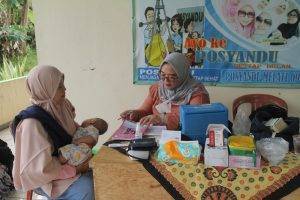As the demand for assisted reproductive technologies (ART), such as in-vitro fertilisation (IVF), continues to climb, Singapore is proactively expanding IVF facilities at public hospitals.
This strategic enhancement is designed to accommodate the increasing number of couples seeking medical assistance to conceive. It reflects the broader shifts in societal attitudes and advancements in reproductive health technologies.
Significant Growth in ART Usage
In 2022, Singapore saw about 10,500 cycles of ART treatments. This marks a 14% increase from 2020 and an impressive 81% jump from the 5,800 cycles recorded in 2013. This substantial growth highlights a change in societal attitudes, where greater awareness and acceptance of ART have helped to diminish the stigma associated with these procedures.
Expanding Capacity at Public Hospitals
In response to this surging demand, the Singapore Ministry of Health has outlined significant expansion plans for several key institutions. KK Women’s and Children’s Hospital (KKH), Singapore General Hospital (SGH), and National University Hospital (NUH) are set to progressively increase their capacity for ART treatments in the coming years. This initiative is part of a broader strategy to ensure that state-of-the-art reproductive health services are accessible to all Singaporeans.
Detailed Plans for Hospital Upgrades
KK Women’s and Children’s Hospital (KKH)
KKH is planning to open a new IVF specialty laboratory by 2024. This facility will enhance the hospital’s capacity for more specialized cases, such as those requiring biopsy procedures for pre-implantation genetic testing and elective egg freezing.
Singapore General Hospital (SGH)
SGH will relocate its Centre for Assisted Reproduction to a new, larger space within the hospital compound by 2027. The new location will feature more consultation rooms, a larger operating theatre, and a state-of-the-art laboratory that can accommodate more incubators.
National University Hospital (NUH)
NUH has already completed a renovation of its IVF laboratory in 2022, which increased its capacity to store frozen eggs and embryos by about one-third. This upgrade is part of NUH’s ongoing efforts to meet the growing needs of its patients more efficiently.
Drivers of Increased ART Demand
Several socio-economic factors are contributing to the increased demand for ART in Singapore:
Delayed Marriages and Childbearing
The median age at first marriage has gradually increased. This has led to later attempts at conception, when natural fertility may have declined.
Government Support and Subsidies
The Singapore government provides significant financial support to couples undergoing IVF. For instance, eligible couples can receive co-funding for up to 75% of the costs for certain ART treatments. This substantial subsidy has made these treatments more accessible and affordable.
Technological Advances in Reproductive Health
Advances in medical technology, such as improved success rates through genetic screening and other innovative ART techniques, have made these treatments more appealing and effective.
Challenges and Prospects
While the expansion of ART facilities represents a significant advancement, challenges such as ensuring equitable access and managing the social implications of later-in-life childbearing remain. Furthermore, as reproductive health technology and methods continue to evolve, ongoing education and policy adaptation will be crucial.
Conclusion
The expansion of IVF facilities in Singapore is a testament to the country’s commitment to supporting family planning and addressing fertility challenges among its population. By increasing the capacity and accessibility of ART treatments, Singapore not only aids individual couples but also addresses broader demographic challenges. This proactive approach in healthcare planning illustrates Singapore’s dedication to enhancing the quality of life for its citizens and ensuring that each couple has the best possible support on their journey to parenthood.











